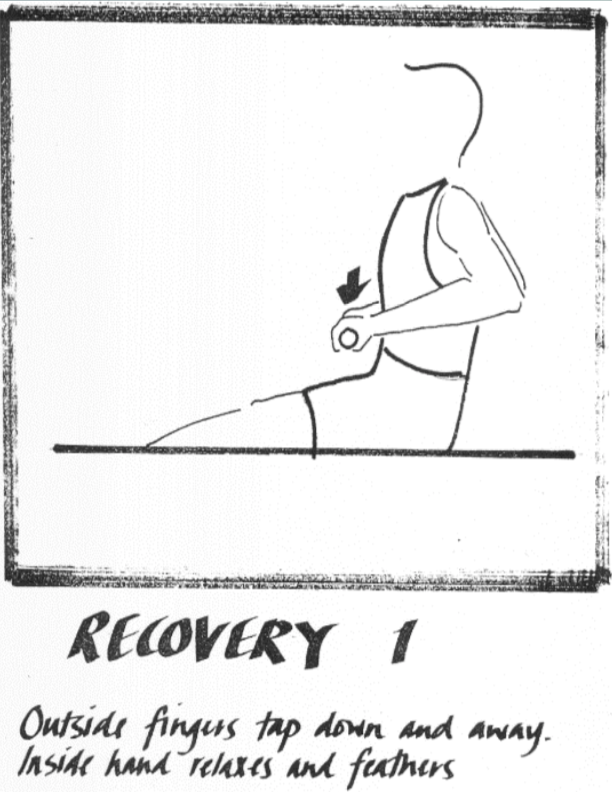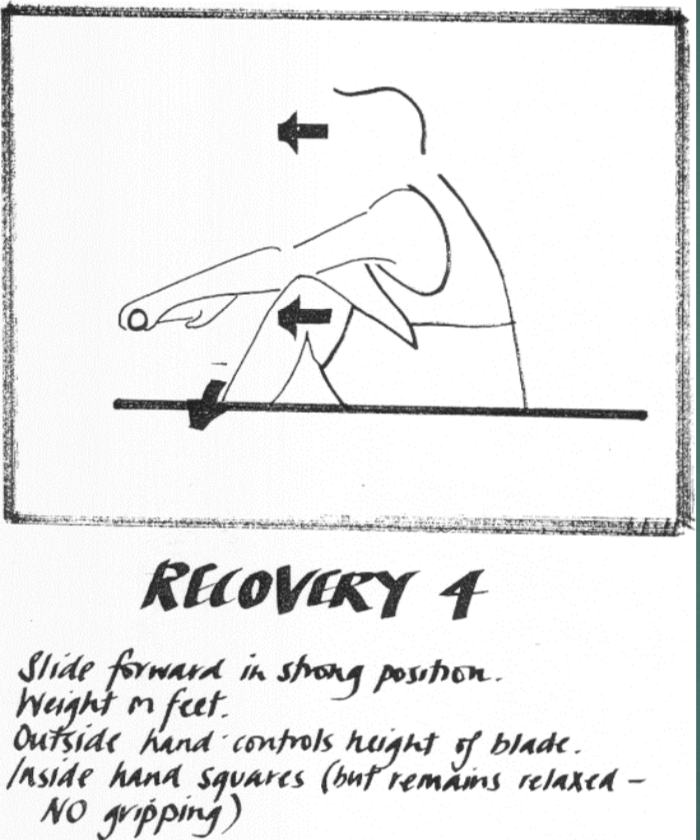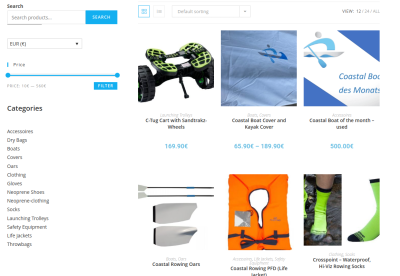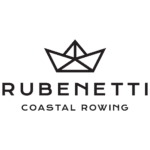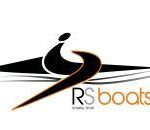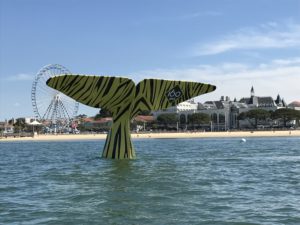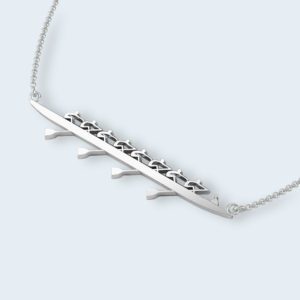The importance of the recovery and how it fits in the rowing and sculling stroke
The rowing recovery is the part of the stroke where the rowers let the boat move and prepare for the next stroke.
This happens during the time the blades are out of the water: from the time the blades are extracted from the water at the finish to the time the blades are placed back in the water at the catch.
- Imagine you are in a playground pushing someone on a swing. Place your hands firmly and evenly on their back and push your arms out straight to shove them away.
- What did you do as the swing moved away from you?
- What did you do as the swing came back?
- Do you notice your hands leading the swing back in towards you until they matched its incoming speed?
Your legs bend in the same way, preparing to push the boat away and matching its speed.
- Now think about making the person swing higher.
- How does this change the way your arms and hands work to push?
- How does this change the way your arms and hands prepare to push?
That’s right: you push more firmly, recruit more of your body in the push without changing the way your hands recover their position.
A good recovery is easy and relaxed and allows for the maximum of recuperation between strokes. If the recovery is well done it takes very little energy and effort.
During the recovery the crew cannot speed up the mass of the boat and rowers. They can prepare themselves so that the minimum of speed is lost at the next catch. Preparation and rest are the goals during the recovery and patience and poise are the means to that end.
The Benefits of a Good Recovery


Rowing is one of the sports that has a glide phase (the others mostly involve ice and snow) where speed can be gained by technical skill without work.
If a crew or sculler executes the recovery well the boat will run further between strokes and thus move faster for the same effort.
The recovery phase of the stroke is also the preparation for the next power phase and thus a good recovery makes it easier for the rower to execute the next drive or power phase well.
During the recovery the athlete has a chance to rest and recuperate. A smooth and easy recovery allows for more rest and recuperation by the rower and thus saves energy for the drive where it is beneficial.
Perils of a Bad Recovery
A bad recovery is wasteful of speed and energy.
- Go back to the swing in the playground.
- What happens if you are not ready to push at the height of the swing’s return?
- If you were late in the push did you find yourself pushing when the swing was already on its way down, feeling as if you were chasing after the swing without a firm grip?
- If you hadn’t taken your arms back did you notice how stiff and juddering your push became?
- And what happens if you’re too keen and try to push sooner or more quickly?
- Did you notice the swing’s chains jinking, bumped out of their smooth flight?
If the recovery is rough and ill-timed relative to the boat the run of the craft will be disturbed and speed lost.
Tension and the resultant extra energy needed to roll forward will cost a rower or crew dearly. When the recovery is easy and fluid more time is available to rest. A hurried and forced recovery costs vital watts of power output and slows the athlete and leads to premature exhaustion.
A Brief Description of the Recovery
The recovery is the reversal of the movements in the drive.
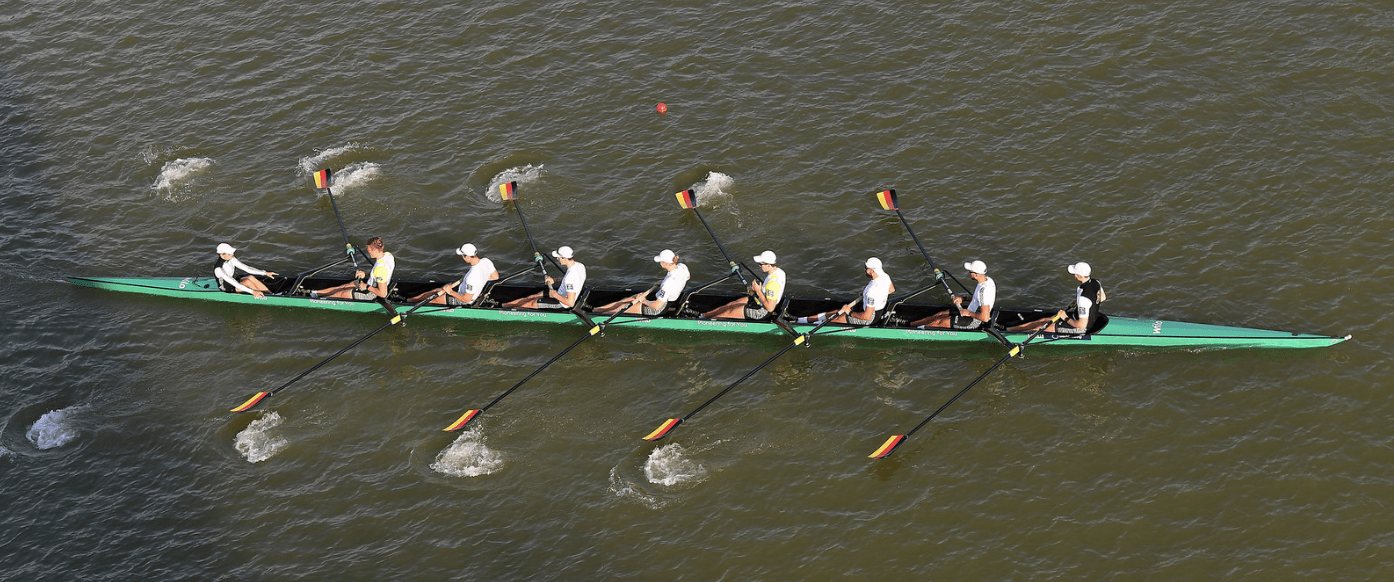

There are three main parts to the recovery after the blade(s) come out of the water: the arms straighten the body rocks forward and the legs bend. These three movements follow this sequence and overlap to some extent as the rower returns to the catch position.
A drill to teach athletes how to do the recovery
- Sit at the backstops in and place the blades square in the water. (This is easier in a crew boat than a single).
- Back the boat down by pushing your hands away from you. Push firmly till they are over your knees and the boat has started moving. As your hands go over your knees and the boat has started moving you may need to push up on the handle(s) to keep the blade(s) in the water.
- Once the boat is moving relax and follow the handles forward to the catch position. (Let the handle(s) draw you forward.)
- Feel how easily you stretch forward, how easily the handle(s) glide with the movement of the boat.
- Feel how the pressure comes onto your feet as you get closer to the catch position.
In the backing-down exercise above the movement of the boat is enough to draw you into the catch position. Transferring the weight onto your feet early in the recovery gives you the same feeling of the catch coming to you. The three actions are run smoothly together with each subsequent one beginning as the previous one nears completion.
It is vital that this sequence is observed to ensure that the transfer of weight from seat to feet takes place early in the recovery and that the back and pelvis are returned early to the strong catch position.
A good general description of how the movements run together is that the hands approach the mid-thigh before the back moves and the shoulders are in front (relative to the rower) before the seat moves.
In rowing there is an asymmetry in the recovery as the back and shoulders must swivel to follow the oar handle towards the catch. This is best done early, as the back moves through the vertical.
